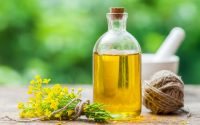Hydraulic Oil Press Control The Movement Direction Of The Executing Agency
What is the difference between a Hydraulic Oil Press and an oil machine? Someone called the Hydraulic Oil Press, some people call the press, often someone is not very clear, the feeling is not too clear, below we will analyze what the nature of the difference between the two.
Hydraulic Oil Press think is to use oil to generate power, and the hydraulics can be used to drive oil, but also to drive water, because water is also liquid, there is a mixture of oil and gas is called the air pressure machine or gas Hydraulic Oil Press or pressurized bed. What are the roles and principles of their components? It’s also easy to say. The working mode and development process of the Hydraulic Oil Press is a kind of transmission mode which utilizes the liquid pressure to transmit power and control. Hydraulic Oil Pressure device is by hydraulic pump, hydraulic cylinder (hydraulic motor and other actuators), hydraulic control valve and hydraulic auxiliary components hydraulic Pump: Converts the mechanical energy into a hydraulic energy conversion device. Hydraulic Cylinders (hydraulic motors and other actuators): The hydraulic energy can be converted to mechanical energy. Control valve: Control the flow of hydraulic oil, flow, pressure, the working order of hydraulic actuator and protect the function of hydraulic circuit. The popular point is to control and regulate the flow of hydraulic media, Pressure and flow. Thus controlling the movement direction of the actuator, the force or torque of the output. Movement speed. The action sequence, as well as limiting and regulating the working pressure of the hydraulic system to prevent overload.
The temperature rise and heat and pollution of hydraulic system are also a kind of comprehensive fault manifestation, which is measured by measuring oil mild and small amount of hydraulic element.
Hydraulic equipment is used as a working medium to transfer and transfer energy, the process of mechanical energy loss, pressure loss and volume loss must be converted into heat release. From the beginning of operation close to room temperature, through the fuel tank, pipe and body surface, but also through the installation of oil cooler cooling, after a certain period of time, the temperature is no longer elevated and stable in a certain temperature range to achieve thermal equilibrium, the difference is temperature rise.
High temperature rise will have the following failures and adverse effects:
① the oil temperature of the Hydraulic Oil Press increases, will reduce the oil straw, the leakage increases, the pump volume efficiency and the entire system efficiency 16% will reduce significantly. Due to the decrease of the “degree, the oil film of the 12%90 moving parts such as the sliding valve is thinned and cut, and the friction resistance increases 180, which causes the abrasion to increase, the system heats up, and brings the 125% high temperature rise.
② Hydraulic machine Oil temperature is too high, so that the mechanical deformation, not only 100%-60 the hydraulic components in the thermal expansion coefficient between the different moving parts of the gap between small and die, causing action failure, but also affect the accuracy of the hydraulic equipment, resulting in poor quality parts processing.
③ hydraulic machine Oil temperature too high, will also make rubber seals deformation, premature aging failure, reduce service life, loss of sealing performance, resulting in leakage. The leak will further heat the temperature rise.
④ oil temperature is too high, will accelerate the oil oxidation metamorphism, precipitates The bitumen material, reduces the service life of the hydraulic oil. The release of the blockage damping holes and gap-type valve, resulting in pressure regulator failure, flow valve flow instability and direction of the valve card die, the metal pipe elongation bend, and even rupture, and many other failures.
⑤ The oil temperature of Hydraulic Oil Press is increased, the air separation pressure of parking is reduced, the dissolved air in the pumping is escaping, and the cavitation is produced, which results in a lower working performance.


